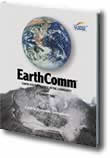This investigation will help you to:
- To learn more about the history of earthquake studies, visit:
"A Brief History of Seismology to 1910" - Institute for Crustal Studies, University of California at Santa Barbara
Read about early explanations for earthquakes and the start of the "modern era" of seismology at around 1750. Follow the development of the science of earthquake study. - To learn more about recent seismic activity and how seismic waves travel through the Earth, visit the following web sites:
"Near Real Time Earthquake List" - USGS National Earthquake Information Center, Golden, Colorado
Review a list of the most recent earthquake activity for the world. Click on the earthquake of interest to read an "Earthquake Bulletin" which gives an epicenter location map, seismic history of the area, p-wave travel times, and arrival time data for that earthquake."Seismic Monitor" - IRIS Consortium, University of Washington
Map is updated every 30 minutes - shoes locations of earthquakes as well as seismic events on or near nuclear test sites.Travel-time curves - IRIS
Brief, animated demonstration of how travel-time curves are created - Virtual Earthquake
Visit the original Virtual Earthquake or revised Virtual Earthquake web sites.
- Practice using seismographs to find an earthquake epicenter.
- Simulate an earthquake in the region of your choice.
- Print out a record of your results.
Include the seismograms and the map showing the epicenter location, but do not do the magnitude activity at this time.
"How are Earthquakes Studied?" - UPSeis from Michigan Technological University
Includes a photograph and description of the first device used to detect earthquakes and an illustration showing how seismograms are generated.
"How Do I Read a Seismogram" - UPSeis from Michigan Technological University
Includes images to help you to learn to read seismograms."Seismometers, Seismographs, and Seismograms" USGS Cascades Volcano Observatory

